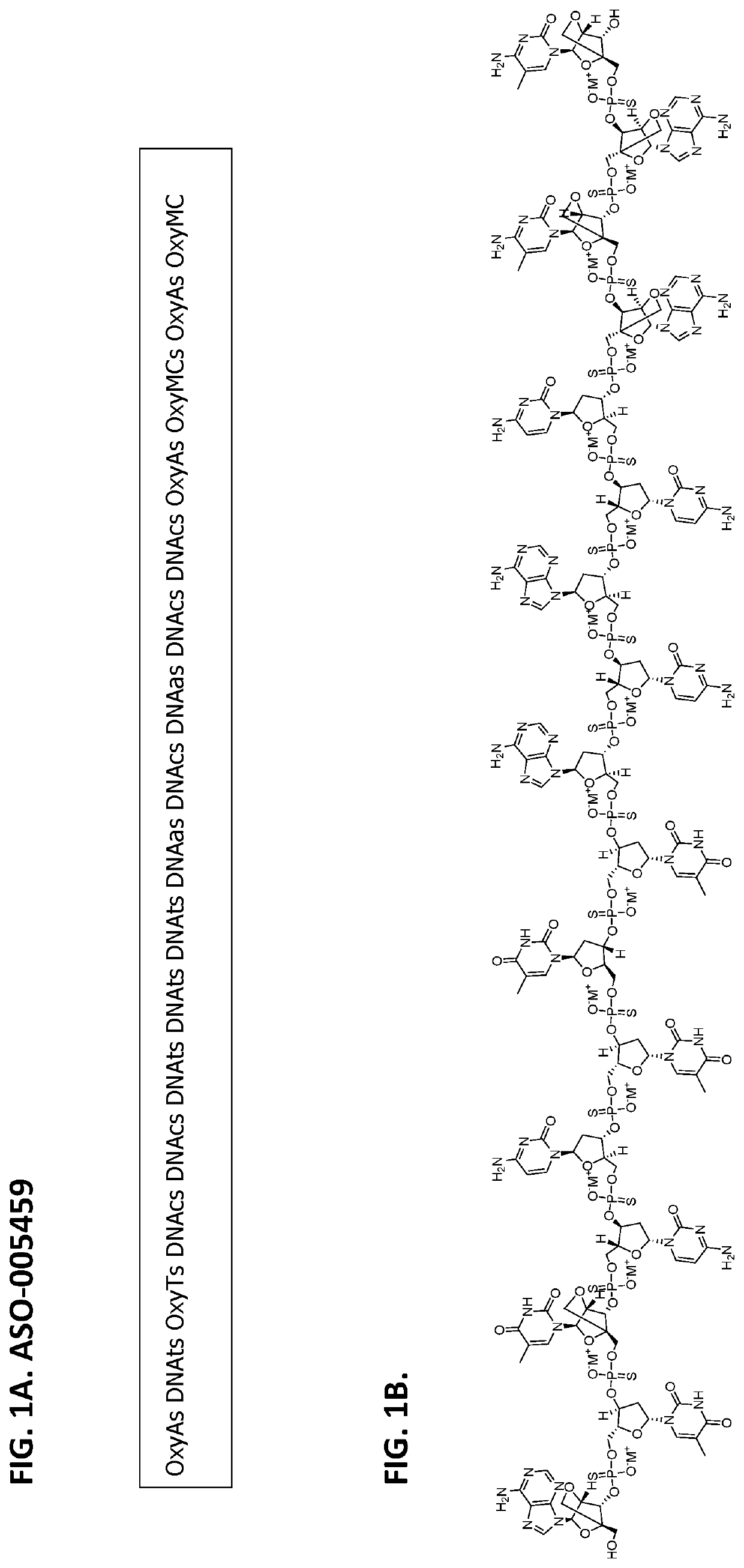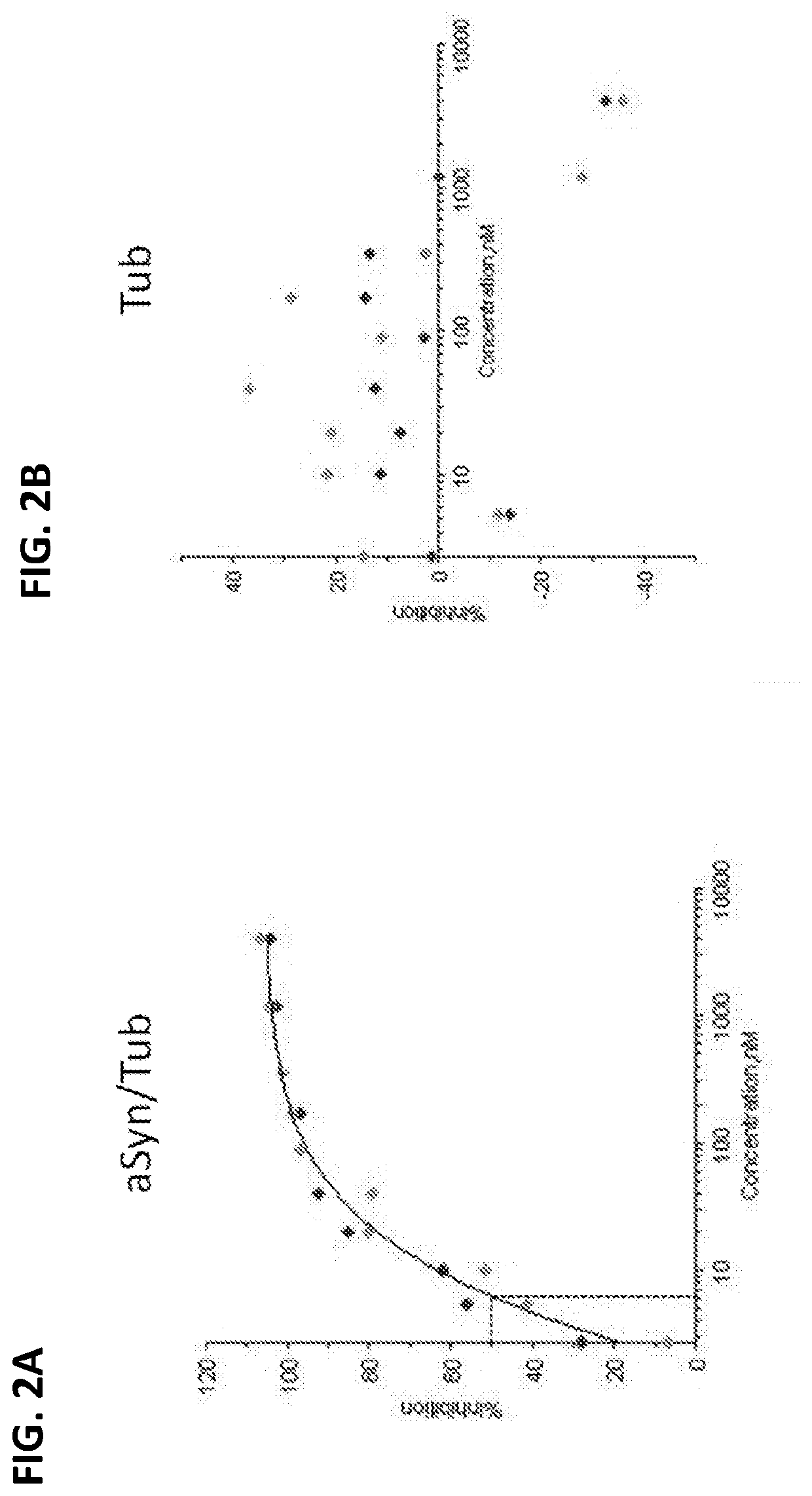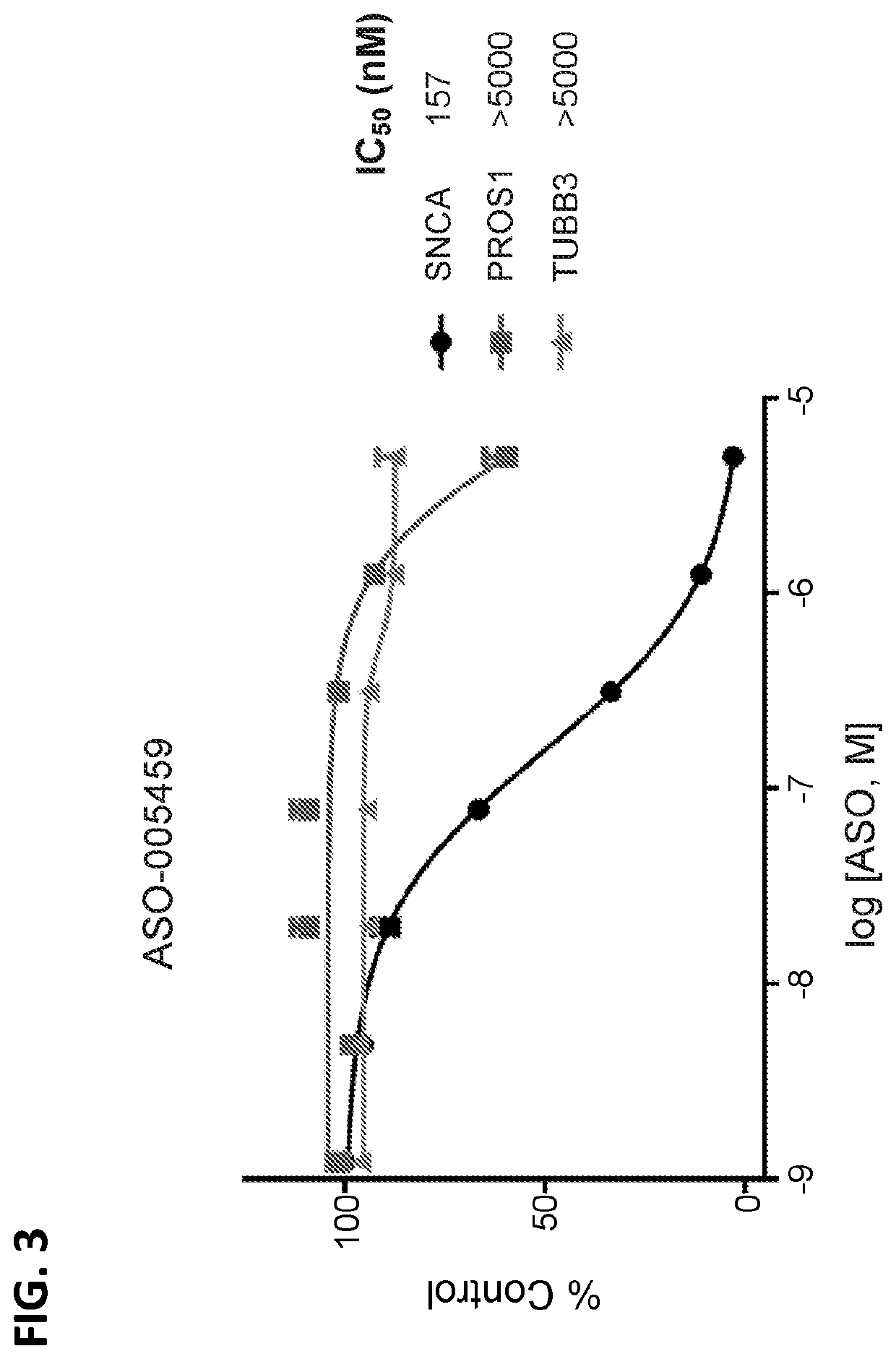Antisense oligonucleotides targeting alpha-synuclein and uses thereof
an anti-synuclein and anti-oligonucleotide technology, applied in the field of anti-oligomeric compound, can solve the problems that alterations in snca expression and/or function can disrupt critical biological processes, and achieve the effects of reducing snca mrna expression, and reducing snca protein expression
- Summary
- Abstract
- Description
- Claims
- Application Information
AI Technical Summary
Benefits of technology
Problems solved by technology
Method used
Image
Examples
example 1
ion of ASO-005459
[0117]The ASO described herein (i.e., ASO-005459) was designed to target the junction between intron 1 and exon 2 of SNCA pre-mRNA (i.e., nucleotides 7,604 to 7,620 of SEQ ID NO: 1). ASO-005459 was designed to be a gapmer (e.g., alternating gapmer) and contains locked nucleic acids—LNAs (upper case letters), beta-deoxy LNA at the 5′ end and the 3′ end, and a phosphorothioate backbone. But the backbone can be other types of backbones (e.g., a phosphodiester linkage, a phosphotriester linkage, a methylphosphonate linkage, a phosphoramidate linkage, or combinations thereof).
[0118]The ASO of the present disclosure was synthesized using methods well known in the art. Exemplary methods of preparing such ASOs are described in Barciszewski et al., Chapter 10—“Locked Nucleic Acid Aptamers” in Nucleic Acid and Peptide Aptamers: Methods and Protocols, vol. 535, Gunter Mayer (ed.) (2009), the entire contents of which is hereby expressly incorporated by reference herein.
example 2
ent Assay to Measure Reduction of SNCA Protein in Primary Neurons
[0119]ASO-005459 was tested for its ability to reduce SNCA protein expression in primary mouse neurons. The primary neuronal cultures were established from the forebrain of PAC-Tg(SNCAA53T)+ / +;SNCA− / − (“PAC-A53T”) mice carrying the entire human SNCA gene with a A53T mutation on a mouse SNCA knockout background. See Kuo Y et al., Hum Mol Genet., 19: 1633-50 (2010). All procedures involving mice were conducted according to Animal Test Methods (ATM) approved by the Bristol-Myers Squibb Animal Care and Use Committee (ACUC). Primary neurons were generated by papain digestion according to manufacturer's protocol (Worthington Biochemical Corporation, LK0031050). Isolated neurons were washed and resuspended in Neurobasal medium (NBM, Invitrogen) supplemented with B27 (Gibco), 1.25 μM Glutamax (Gibco), 100 unit / ml penicillin, 100 μg / ml streptomycin, and 25 μg / ml Amphotericin B.
[0120]Cells were plated on multi-well poly D-Lysine...
example 3
E® Analysis (96-Well Assay) to Measure mRNA Reduction in Human Neurons
[0123]The ability of ASO-005459 to reduce human SNCA mRNA and / or possible human off target mRNA species was measured in vitro by QUANTIGENE® analysis. Human neurons (Cellular Dynamics Inc., “iNeurons”), were thawed, plated, and cultured per manufacturer's specifications. These iNeurons are highly pure population of human neurons derived from induced pluripotent stem (iPS) cells using Cellular Dynamic's proprietary differentiation and purification protocols.
[0124]Lysis: Cells were plated on poly-L-ornithine / laminin coated 96-well plates at 50,000 to 100,000 cells per well (dependent on the expression of the off target being investigated) and maintained in Neurobasal media supplemented with B27, glutamax, and Penicillin-Streptomycin. The ASO was diluted in water and added to cells at DIV01 (i.e., 1 day post plating). For single point measurements, a final ASO concentration of 0.5 was typically used. For IC50 determi...
PUM
| Property | Measurement | Unit |
|---|---|---|
| body weight | aaaaa | aaaaa |
| total volume | aaaaa | aaaaa |
| concentration | aaaaa | aaaaa |
Abstract
Description
Claims
Application Information
 Login to View More
Login to View More - R&D
- Intellectual Property
- Life Sciences
- Materials
- Tech Scout
- Unparalleled Data Quality
- Higher Quality Content
- 60% Fewer Hallucinations
Browse by: Latest US Patents, China's latest patents, Technical Efficacy Thesaurus, Application Domain, Technology Topic, Popular Technical Reports.
© 2025 PatSnap. All rights reserved.Legal|Privacy policy|Modern Slavery Act Transparency Statement|Sitemap|About US| Contact US: help@patsnap.com



